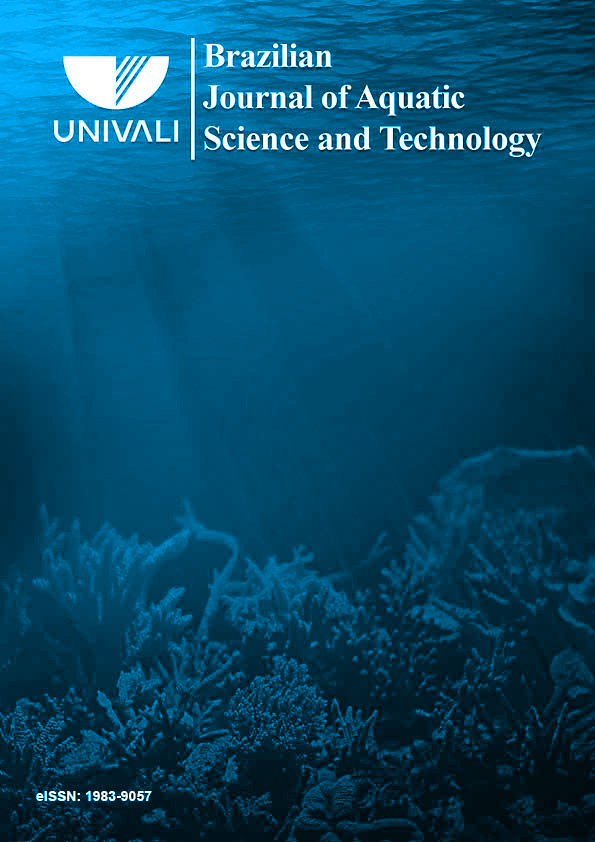Pigment-based chemotaxonomy of the phytoplankton community from a marine mussel farming area
DOI:
https://doi.org/10.14210/bjast.v25n1.16492Abstract
Microscopy technique is traditionally employed for assessing phytoplankton taxonomy. However, chemical approaches, such as the identification of biomarker pigments, allow to elucidate microalgae groups more quickly, in addition to detecting these valuable compounds. This study aimed to identify the pigment profile of microalgae species and to determine the seasonal pigment fluctuation in a marine mussel farm. Water samples were collected periodically between the years of 2014 and 2015. Phytoplanktonic organisms were isolated and cultivated in f/2 liquid medium under controlled temperature and light cycle. Cell content extracts from each unialgal culture and water sample were analyzed by High Performance Liquid Chromatography (HPLC). Pigment profiles of 13 marine microalgae strains were identified (12 Diatoms and 1 Dinoflagellate). Chlorophyll a and fucoxanthin were most present in Diatoms, while peridinin was the major carotenoid in Prorocentrum micans. Bacillariophyceae had higher density in the summer and fall. Dinophyceae, Cryptophyceae, Euglenophyceae, Prasinophyceae, Dictyophyceae and Ebriidea, had an increase in density during winter and spring. Following the trend of phytoplankton groups, pigments such as fucoxanthin, zeaxanthin, diadinoxanthin, chlorophyll c3 and c2, were identified throughout the year. Prasinoxanthin, peridinin, dinoxanthin and antheraxanthin were identified in samples collected during winter and spring.
Downloads
Published
Issue
Section
License
Authors who publish with this journal agree to the following terms:
1. Authors retain copyright and grant the journal right of first publication with the work simultaneously licensed under a Creative Commons Attribution License that allows others to share the work with an acknowledgement of the work's authorship and initial publication in this journal.
2. Authors are able to enter into separate, additional contractual arrangements for the non-exclusive distribution of the journal's published version of the work (e.g., post it to an institutional repository or publish it in a book), with an acknowledgement of its initial publication in this journal.
3. Authors are permitted and encouraged to post their work online (e.g., in institutional repositories or on their website) prior to and during the submission process, as it can lead to productive exchanges, as well as earlier and greater citation of published work (See The Effect of Open Access).

